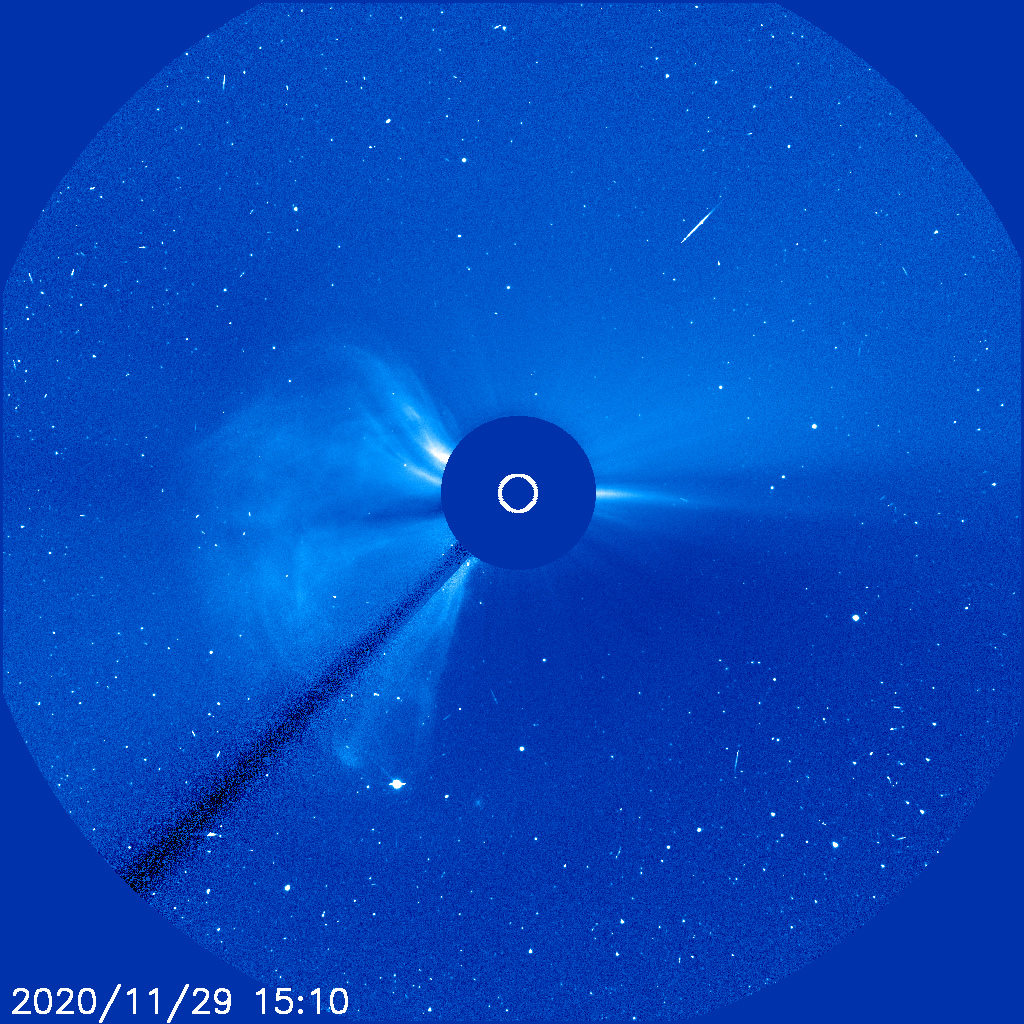
Impact expected late 30 October/early 31 October. A partial halo CME was launched with a clear earth-directed component. Strong G3 geomagnetic storm possible this Halloween weekend! /lFNI0FwISeĪnother look at the X1 solar flare and the resulting CME as seen by SOHO/LASCO.
Solar flare today full#
The initial CME eruption on Thursday was caught by SDO, but it was the NASA/ESA Solar and Heliospheric Observatory (SOHO) that captured its full scope (as seen in the tweet below).Īnother look at the X1 solar flare and the resulting CME as seen by SOHO/LASCO. A CME, sometimes called a 'solar storm', is a cloud of charged solar particles that can blast away from the Sun during a solar flare. In the aftermath of the flare, an immense coronal mass ejection (CME) erupted into space, aimed more or less directly at Earth. WATCH FOR THE NORTHERN LIGHTS!Īlthough the flare, the solar tsunami, and the radio blackout occurred roughly at the same time on Thursday, and the solar radiation storm began a short time after, there's one more impact from this event that we're still waiting for. A minor solar radiation storm has also been impacting Earth since the flare, due to solar protons being accelerated away from the flare region. This can completely disrupt radio communications between points on Earth's surface, and between the surface and satellite in orbit. Radio blackouts occur in the aftermath of strong solar flares, as the UV and x-rays from the flare disturb Earth's ionosphere, causing it to degrade or completely absorb high-frequency radio signals. Immediately following the flare, the top of Earth's atmosphere was bombarded by intense ultraviolet radiation and solar x-rays.Īccording to NOAA's Space Weather Prediction Center, this resulted in a strong radio blackout on the day side of Earth. The three panels below track the solar tsunami that immediately radiated out across the Sun's surface over the next 30 minutes. The top panel of this composite image shows a closeup look at the southern hemisphere of the Sun and Active Region 2887, at the moment Thursday's X1 solar flare began. The release of energy during the flare set off a 'solar tsunami' - a shockwave that spread out across nearly the entire face of the Sun. Around midday on Thursday, though, it suddenly blasted out an intense X1-class solar flare. This cluster had been sparking and sputtering with minor and moderate flares for days. Of particular interest to space weather forecasters was a large, volatile sunspot cluster in the southern hemisphere, which they named Active Region 2887 (AR2887). On Thursday, October 28, NASA's Solar Dynamics Observatory was in the midst of its careful watch over the Sun. As we are just entering a new solar cycle, increasing solar activity will result in more opportunities to see auroras in the future. Storm levels only reached G1 (weak), rather than the forecast G3 (strong) levels, thus the auroras produced remained farther north. Perhaps as a result of its slower speed, and possibly due to the effects of it passing through a denser region of the solar wind, the CME's impact on Earth's geomagnetic field was weaker than predicted.
Solar flare today update#
Update (Nov 4): although the solar storm did arrive at Earth, it took longer to reach us than space weather forecasters had anticipated. Auroras may be dancing across our skies thanks to an immense solar storm the Sun blasted out into space. A robust exploration work package identified promising new predictors and connected flare prediction to other manifestations of solar eruptive activity such as coronal mass ejections.We may be in for a special Halloween treat on Sunday night. We identified the best performers by employing a variety of statistical and machine learning techinques, including standard methods such as Linear Discriminant Analysis, Clustering and Regression Analysis, Neural Networks, as well as innovative approches including Multi-Task Lasso, Simulated Annealing and Random Forest.

The team integrated virtually every solar flare-predicting parameter into an open online application programming interface, flexible enough to facilitate future expansion. The FLARECAST consortium developed an automated forecasting system for solar flares.


Reliable space weather predictions are vital for taking mitigation measures in time. Should a very strong solar storm hit the Earth, it may not only cause damage to space-based technology but also to communication systems, transportation networks, pipelines, and power grids on the ground. Since the end of the 20 th century, however, we have become more vulnerable due to space-relying technologies our society depends on. Until recently, solar activity wasn’t considered a notable threat for our planet.


 0 kommentar(er)
0 kommentar(er)
